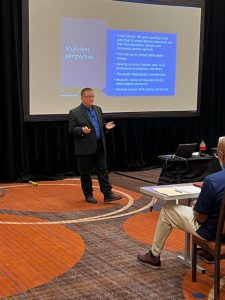Over the past five years, give or take, the topic of school safety has grown in significance and at rates unanticipated. Many of those in education—and parents too—might refer to the Sandy Hook Elementary School shooting in 2012 as they reflect on some of the most tragic events in recent years. Or perhaps the Marjory Stoneman Douglas High School shooting in 2018. Without a doubt, each of these—although there are many more—has greatly influenced the current state of school safety. But how much progress have educators and lawmakers made in ensuring school security?
While attention toward the issue has rapidly increased, the data suggests that school-targeted threats are even more prevalent today than in recent years. According to the latest information available from the “K-12 School Shooting Database,” last year’s record-high tally of incidents involving a firearm on school grounds has already been surpassed. As of Nov. 15, 2023, there have been 311 occurrences of a gun going off on campus compared to 2022’s total of 305.
Kenneth Trump, president of the National School Safety and Security Services, says school safety falls under what research calls a “wicked problem.”

“Wicked problems are those societal problems that are hard to narrowly define, are made up of complex and interacting dynamics, and have no stopping points where if you do ‘x’ number of things to solve the problem it will be resolved,” he explains. “One wicked problem is often a symptom of another wicked problem. For example, in our broader society gun violence has been classified by some as a wicked problem, and you could say that substance abuse and crime overall are wicked problems, as well. With ‘wicked problems’ the question is typically one of not whether you will be able to eliminate the problem, but rather will it be better or worse.”
This doesn’t mean that school leaders should wave their white flags in surrender to this ongoing epidemic. Instead, he says they must take action to reduce the risk and prepare themselves to manage these seemingly inevitable situations.
“Steps taken to make schools safer may reduce risks, but unfortunately we will not be able to eliminate risks,” he says. For example, we cannot completely ‘eliminate’ gun violence, substance abuse, or other societal ills in our society, but we can work to reduce them and make situations better rather than worse.”
Trump argues that it would be foolish to suggest that educators are able to “totally eliminate” the presence of violent threats at schools because these environments are simply a “microcosm” or a reflection of our broader communities. Yet, many leaders fail to tell parents that they’re unable to guarantee the total safety of their children, which is understandable. But in the meantime, district and build leaders ought to address these problems with research-based and best-practice solutions to school violence.
More from DA: How one big state is steering students toward higher-paying careers
One way not to approach school security, he mentions, is by window shopping the latest and greatest surveillance technologies.
“Many educators are being sold a false sense of security by vendors who often make hyped-up marketing claims about the capabilities and expectations their products or technology will have on making schools safer,” says Trump. “This in turn leads to well-intentioned educators putting forth direct or implied unrealistic expectations to their students, staff and parents about these target-hardening physical security measures. While superintendents, school boards and principals think they are reassuring their school community with shiny objects and security theater, they risk raising the bar of expectations that will likely result in their school community having even less trust and confidence in their leadership if and when the next gun incident occurs despite all the bells and whistles they installed with the hopes of reducing anxiety around school safety.”
Plain and simple, these “wicked problems”—gun violence and school-related threats—are people problems and have nothing to do with flaws in a school’s safety technology. Instead, Trump advises K12 leaders to invest in their staff through proper threat response training that aligns with best practices and research.
“We’re not going to solve a problem with a technology or hardware product,” he says. “Any security technology and target hardening will only be as good as the weakest human links behind them.”









